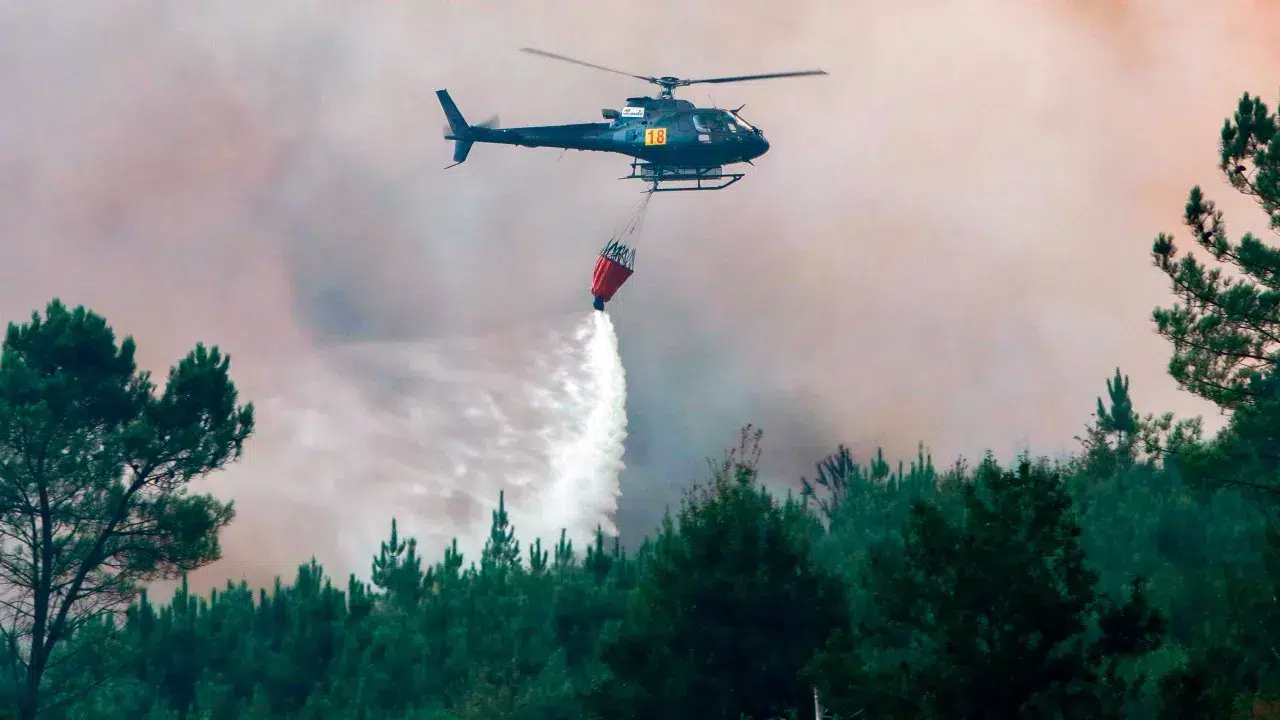
“It becomes essential that, in case of worsening meteorological or operational conditions, the district fire fighting device is promptly reinforced, particularly with the allocation of air and land resources suited to the specificities of the territory,” states the CIM of Alto Minho.
In a statement issued regarding the government’s decision to address the absence of five aerial resources in the 2025 Special Rural Fire Fighting Device (DECIR), the entity comprising the 10 municipalities of the Viana do Castelo district emphasizes that solidarity with other regions of the country is unquestionable, but it is expected that, given a concrete need, Alto Minho can rely on equal attention and timely reinforcement of resources.
On Wednesday, the Secretary of State for Civil Protection announced that to mitigate the absence of five aerial resources in DECIR 2025, one of the two aircraft still under maintenance will be relocated from the Arcos de Valdevez helipad to Portalegre.
“We have faced challenges that arise from situations beyond our control, namely the Air Force tender that was deserted and prevents us from having all the resources we would like in the short term,” said Rui Rocha to journalists during his visit to the Castelo Branco Logistics Support Base.
For the CIM of Alto Minho, based in Ponte de Lima, the removal of the aerial resource occurs “in full preparation for the critical fire period” in “one of the areas in the country with the highest risk and history of rural and forest fires, especially due to its vast forest area, rugged terrain, scattered population, and the presence of the Peneda-Gerês National Park, an area of high environmental, social, and economic value.”
With a total area of 222,000 hectares, the district of Viana do Castelo has 208 parishes, 99 of which (8.9% of the total country) are considered priorities in forest fire prevention and where 1,185 priority locations are identified.
The CIM of Alto Minho states that, “despite maintaining one aerial resource at Arcos de Valdevez, it maintains a stance of active monitoring in light of the upcoming challenges.”
“Understanding the need for balanced management of resources at a national level and expressing solidarity with other regions that, at this stage, might be more vulnerable, Alto Minho should maintain a robust and prepared device to face possible occurrences,” it asserts.
It also highlights “the tireless effort of all operatives involved in fire prevention and combat – firefighters, forest sappers, security forces, technicians, and volunteers – who have been crucial year after year in protecting people, property, and ecosystems.”
The CIM Alto Minho, established in October 2008, comprises the municipalities of Arcos de Valdevez (PSD), Caminha (PS), Paredes de Coura (PS), Ponte de Lima (CDS-PP), Valença (PS), Viana do Castelo (PS), Vila Nova de Cerveira (PS), Ponte da Barca (PSD), Monção (PSD), and Melgaço (PS).
DECIR 2025 anticipated 79 aircraft, but at present, just days before the start of the Delta phase, considered the most critical (from Tuesday until September 30), there is still the need for five aerial resources.
Starting Tuesday, Portugal can also rely on a pair of medium amphibious Fire Boss planes, as part of the rescEU program, to act whenever national response capacities are insufficient in extreme situations.
These resources involve an investment of approximately 2.6 million euros, 75% financed by the European Commission, and allow for an enhancement of aerial fire fighting capabilities.




